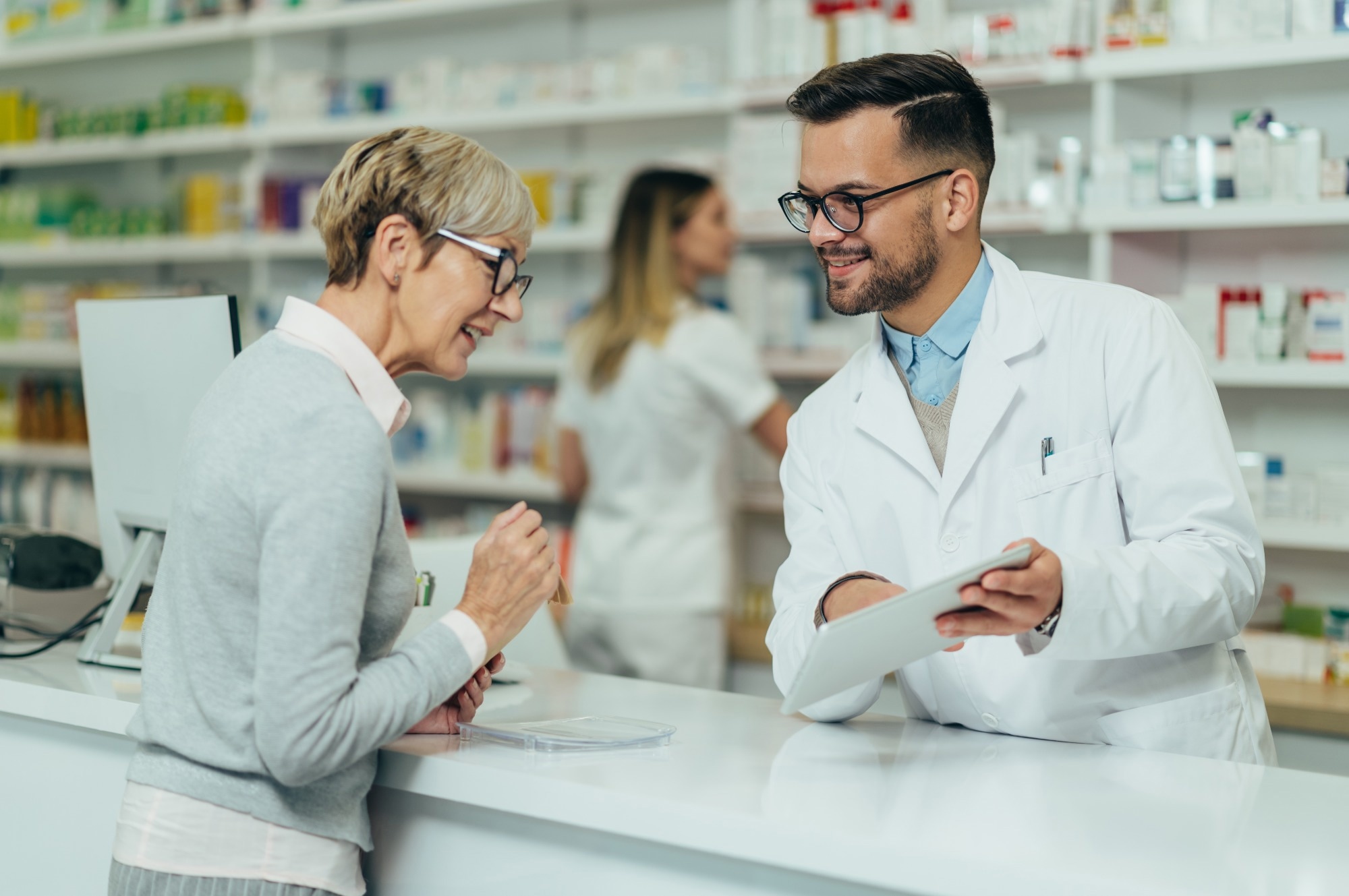A recent BMC Public Health study explores whether community pharmacists could play a role in preventing skin cancer.
 Study: The role of community pharmacists in primary and secondary prevention of skin cancer: an evaluation of a Flemish skin cancer prevention campaign. Image Credit: Zamrznuti tonovi / Shutterstock.com
Study: The role of community pharmacists in primary and secondary prevention of skin cancer: an evaluation of a Flemish skin cancer prevention campaign. Image Credit: Zamrznuti tonovi / Shutterstock.com
Background
The prevalence of skin cancer is increasing globally. In the next decade, researchers predict that 20% of the Belgian population could develop skin cancer before 75 years of age.
Exposure to ultraviolet (UV) irradiation significantly increases the risk of skin cancer. A previous study estimated that around 86% of melanoma cases are linked to excessive UV exposure; however, the early detection of this disease increases its curability by 92%. Therefore, the skin cancer burden can be reduced through early detection and following preventive strategies.
Skin cancer preventive measures have been divided into primary and secondary prevention. Enhancing awareness about harmful UV exposure and informing or providing education about the effective ways to protect oneself from the sun are primary preventive strategies.
Notably, these campaigns have enhanced sun protection behavior in the public. For example, television advertising about the use of sunscreen and wearing hats has increased protective behavior and reduced sunburn cases by 50% in Australia.
Secondary preventive strategies are associated with screening and early detection of skin cancer. Although both primary and secondary prevention strategies have effectively reduced skin cancer prevalence, these strategies could not be implemented in rural and remote regions.
Most adults have received information regarding skin cancer and preventive strategies through television advertisements, print media, and the internet rather than from healthcare professionals. Thus, it is essential to understand whether community pharmacists can enhance awareness in remote areas where primary and secondary prevention strategies cannot be routinely accessed.
About the study
The current study explored whether skin cancer counseling provided by community pharmacists influences the purchase of sun protection and dermatological visits. In May 2022, Flemish pharmacists were invited to participate in a skin cancer prevention campaign.
Before the campaign began, all participating pharmacists received relevant training through webinars. These participants were also provided with flyers and posters to hand to people who visited the community pharmacy.
The participating pharmacists were asked to provide four different counseling actions to their visitors. First, they were asked to educate visitors about the leading causes of skin cancer, early symptoms, and preventive actions. All visitors were also provided a flyer that summarized all information.
Community pharmacists were also asked to provide additional counseling regarding cancer preventive strategies. For example, pharmacists could assess the individual’s skin type and recommend a specific sunscreen product. Furthermore, a visitor could be referred to a dermatologist based on visual skin analysis.
Participating pharmacists were asked to submit their actions through a unique National Code Number (CNK) code. Farmaflux provided all relevant data linked to community pharmacies in Belgium.
Study findings
A total of 822 visitors received counseling regarding skin cancer prevention and its early detection at the community pharmacy between May 2022 and June 2022. About 69% of the visitors were female, with a median age of 59 years, and were approached by community pharmacists. Although older people are at a higher risk of skin cancer, younger people must also be targeted to increase their awareness regarding primary prevention of skin cancer.
All visitors received information about skin cancer and flyers to increase their awareness. Additional information was provided to 41% of the total visitors.
About 33% of the participants purchased a sunscreen product the day they received counseling about skin cancer from the community pharmacist. A marginal increase to 38% was observed in the 180-day follow-up period, thus indicating a tendency to take immediate action based on the information received. These actions were more significant among younger visitors, which suggests that counseling might have a greater impact on the younger population.
In the context of a secondary prevention strategy, 11% of visitors had a dermatological prescription within 180 days of counseling. This could be due to an increased awareness among people who received additional counseling from community pharmacists.
Conclusions
The current study has some limitations, including the lack of a control group. As a result, scientists failed to compare the effects between counseled and non-counseled groups, which limited the ability to determine the exact effectiveness of the counseling in reducing skin cancer prevalence. Additionally, the researchers only determined the purchase rate of sunscreen products without analyzing the actual use.
Despite these limitations, the current study indicated the positive effect of primary and secondary preventive counseling on skin cancer provided by community pharmacists. In fact, an increase in the purchasing of sunscreen products and visits to dermatologists after the counseling was observed.
Journal reference:
- Proesmans, K., Van Vaerenbergh, F. and Lahousse, L. (2023) The role of community pharmacists in primary and secondary prevention of skin cancer: an evaluation of a Flemish skin cancer prevention campaign. BMC Public Health 23(2490). doi:10.1186/s12889-023-17429-2